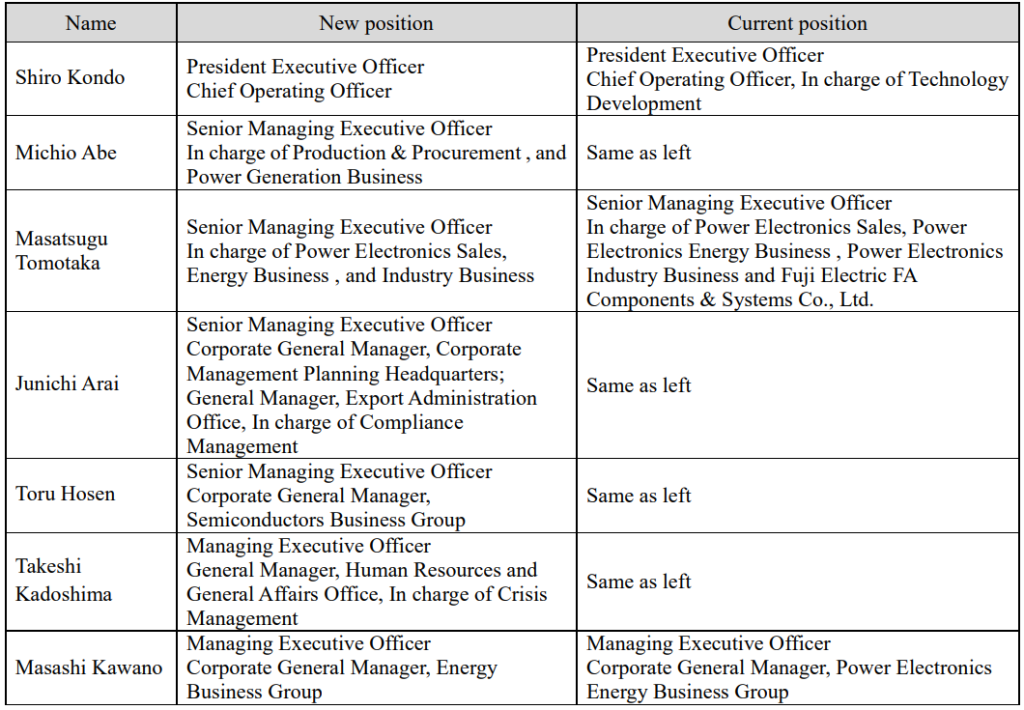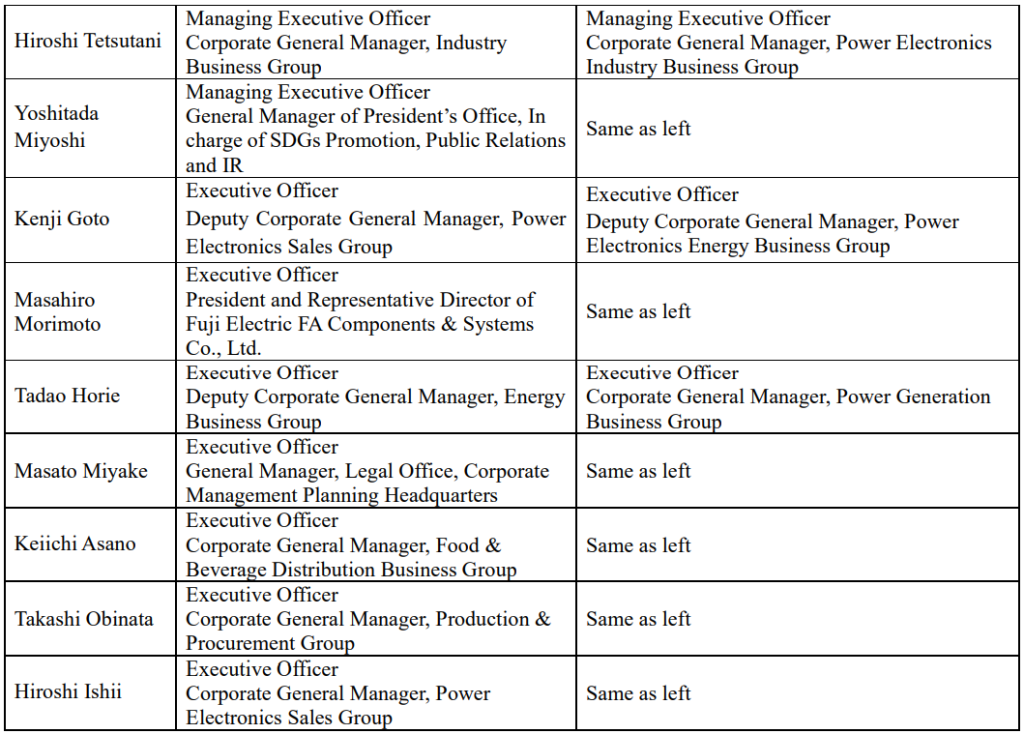-
Littelfuse, Inc. announced the appointment of Gayla Delly to the company’s board of directors, effective September 28, 2023. Delly was also appointed to the Audit Committee.
“Gayla brings a wealth of experience as both a public company executive and seasoned board member,” said Gordon Hunter, Littelfuse Chairman of the Board of Directors. “Her board leadership and broad management experience across companies operating in a diverse set of end markets make her a terrific addition to the Littelfuse board, as we continue to execute our company’s growth strategy.
“We are pleased to welcome Gayla to the Littelfuse Board of Directors,” said Dave Heinzmann, Littelfuse Chief Executive Officer. “Gayla’s track record of driving growth and market expansion while delivering strong financial performance across industries will further strengthen our Board, as we continue our multi-year profitable growth trajectory.”
Delly retired as CEO and a member of the Board of Directors of Benchmark Electronics in 2016, where she spent 21 years in a variety of roles including President, Executive Vice President & Chief Financial Officer, Corporate Controller, and Treasurer. She began her career with KPMG. She currently serves as a director at Broadcom Inc., Flowserve Corporation, and National Instruments Corporation. Delly holds a bachelor’s degree in accounting from Samford University.
Original – Littelfuse
-
EVENTS / LATEST NEWS / PRODUCT & TECHNOLOGY1 Min Read
Okmetic CTO Atte Haapalinna gave a speech in September 2023 at the ISES EU Power event on Customized Silicon and SOI Wafers Enabling Enhanced Power Devices.
Advanced silicon wafers can greatly improve power device performance and reduce power losses. Okmetic Power wafer line provides an optimal platform for the manufacture of various power devices. Power device optimized wafer solutions improve power device performance, reduce Total Cost of Ownership and enable more refined designs.
Okmetic Power wafer line comprise:
- Power Management SOI wafers (Bonded SOI)
- Power GaN Substrate wafers (Si and SOI)
- Discrete Power Device wafers
Read more about Okmetic’s Power wafer line: Power Wafer Line | Okmetic
Original – Okmetic
-
STMicroelectronics will host its Industrial Summit 2023 at the Futian Shangri-La Hotel, in Shenzhen, China, on Sep 28.
In recognition of the extraordinary climate-related challenges, ST has long been guided by its unwavering commitment to sustainability. The Company is actively working to increase power efficiency with its cutting-edge solutions for diffused intelligence (Digitalization) and Energy and Power Conversion, forging a path towards reduced carbon emissions and a sustainable future.
The Industrial Summit is the industry’s premier technology showcase of ST’s Industrial products and solutions. The theme of this year’s event is “Powering Your Sustainable Innovation.” Visitors will hear about the Company’s focus on Smart Power and Smart Digitalization during insightful keynotes and about 30 technical sessions, while also having the chance to experience over 150 demos focused on 3 market segments: Automation, Power & Energy, and Motor Control. The Summit will also host a number of showstoppers developed in close collaboration with ST’s customers and partners.
Innovation highlights in the key focus areas
To provide ST’s Industrial customers in Asia with strong and efficient support for their development activities, ST operates three dedicated Industrial Competence Centers focused on Motor Control, Automation, and Power and Energy that are located close to customers. At Industrial Summit 2023, ST and its customers and partners will showcase multiple innovations listed below leveraging expertise and system-level solutions from these three industrial Competence Centers.
Microgrid: Microgrid is a distributed grid network that is connected to renewable sources and energy storage to minimize energy transmission loss and provide efficient energy utilization while maintaining the benefits of grid connection. ST joined forces with customers to showcase a Microgrid application with multiple energy generation and storage solutions including a photovoltaic (PV) optimizer, a string inverter, a micro-inverter, a hybrid inverter with energy storage, stand-alone energy storage, and an energy-usage example using EV charging stations.
A list of the advanced technologies ST used in this multiapplication demo includes a full range of industry-leading STM32 MCUs, breakthrough wide bandgap power technologies such as Silicon Carbide (SiC) and Gallium nitride (GaN), power metering products, and power-line communication (PLC) controllers. In particular, GaN power discretes and system-in-package devices like ST’s MasterGaN and Sti2GaN are expected to be the preferred technology for future residential PV+ energy storage system (ESS) applications that require high power density and energy efficiency.
KNX Energy Management System: KNX is a global standard with high compatibility and a huge supplier base, making it ideal for the efficient energy system in buildings. At the Industrial Summit, ST will showcase how a KNX Energy-Management System manages energy consumption and generation from various energy sources, such as Solar Inverters, Microgrid, and Battery Storage, for all aspects of applications in buildings, home appliances, and EV charging stations. The KNX Energy-Management System can play an important role in achieving carbon neutrality, enabling energy production and consumption tracking, as well as static and dynamic load management.
By adopting this system, users can proactively decide whether renewable energy should be consumed or stored, while the system provides an optimized energy solution based on user needs. STKNX is a highly competitive KNX transceiver used in a wide range of KNX products from many manufacturers. In addition, ST’s best-in-class MCU, SiC and GaN power technologies, and power conversion ICs are also utilized in this energy-management system.
Servo Drives Orchestra: According to the International Energy Agency (IEA), 53% of global electricity is consumed by motors, which makes motor-control efficiency among the most effective targets for sustainability benefits. On top of better energy performance of the motors themselves, great potential for improvement lies in how electric motors are integrated into industrial equipment and systems.
At the Summit, ST will showcase its most comprehensive motor-control demo – the Servo Drives Orchestra. This solution comprises 8 reference designs with loads ranging from 500W to 22kW. Each of the motors controls a rope that pulls a load and demonstrates high-precision position control, in harmonic movement coordinated simultaneously with the other motors. Each motor drive executes the commands sent by I/O link from the podium where an HMI (Human Machine Interface) controls the mode selection while each drive controller collects temperature and vibration data, executes condition-monitoring algorithms, and wirelessly sends data to the Baidu Cloud. The cloud then reports back system behavior and power savings, among other parameters.
ST is a leading technology provider for servo drives, power-device technologies, computational processing, isolation devices, industrial safety product, and for ecosystems, and for Industrial Automation, Predictive Maintenance, and Connectivity. The Servo Drives Orchestra demo uses an STM32 microcontroller, ST drivers, as well as SiC and GaN power solutions for overall efficiency improvement.
Efficient Transformation to Factory Automation: The use of IO-Link products in factory automation systems can simplify the installation, setup, maintenance, and repair processes, while also contributing to increased production efficiency, energy savings, and carbon neutrality. ST is committed to providing a complete solution for any IO-Link device applications, including a free IO-Link device mini stack, to help manufacturers optimize their operations and achieve greater sustainability.
ST will feature an Automated packing machine with automatic printing and labeling functions for smart factories that utilizes the Company’s IO-Link technology to manage digital input/output, sensors, and solenoid air valve drivers. The system is controlled by a PLC (Programmable Logic Controller), and the system status can be displayed and controlled on an HMI. By connecting the system to a LoRa node, the machine can be remotely monitored and controlled through the IoT Cloud via a LoRa Gateway. The machine uses Digital IO boards, sensor boards, and actuator boards developed by ST Automation Competence Center, demonstrating the comprehensive ST portfolio in action.
Original – STMicroelectronics
-
EVENTS / LATEST NEWS2 Min Read
At its annual Technology Summit in Europe beginning September 27th, GlobalFoundries (GF), is highlighting key advancements to its technology platforms and solutions that will enable better power efficiency, enhanced performance and security for applications across critical end markets including IoT, smart mobile and automotive. These milestones highlight GF’s semiconductor manufacturing leadership in product development, validation and market readiness for critical applications in IoT, 5G and 6G smartphones, and electric vehicles.
Building upon the GF Technology Summit in North America this past August, the sessions in Munich will focus on leading at the edge, manufacturing semiconductors in a digital, AI-driven, world through the evolving landscape of communications infrastructure and the electrification of vehicles.
GF’s President and CEO, Dr. Thomas Caulfield, will kick-off the event with a keynote address entitled “Essential chips fuel the era of AI,” which emphasizes the transformative potential of these technologies and their significance in the rapidly evolving semiconductor landscape. In addition, Peter Schiefer, Infineon Division President Automotive, Jean-Marc Chery, President and CEO of STMicroelectronics and Karsten Schnake, Board Member for Procurement at of ŠKODA AUTO & Head of Project COMPASS at Volkswagen AG will take the stage.
Dr. Thomas Caulfield, joined by leaders in the fabless semiconductor and end-markets industries, will also share GF’s corporate vision for manufacturing the essential chips we rely on to live, work, and connect. In addition, GF’s technology and product management leaders, accompanied by partners in the semiconductor design and manufacturing ecosystem, will outline the company’s technology and solutions roadmap.
Held at the Sofitel Munich Bayerpost, the two-day summit also introduces a new format. This year, representatives from GF’s Technology, Business, and Commercial teams are on hand to host small group meetings, facilitating deeper discussions and partnerships with GF customers.
Original – GlobalFoundries

